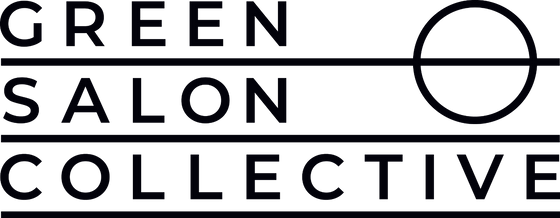For many, hair is simply a material to be styled, trimmed, and eventually discarded. But for artist Donna Lowson, it is a powerful medium—one that speaks to identity, class, and the tension between visibility and invisibility. With over 25 years of experience as a hairdresser, Donna’s journey into art was shaped by her working-class and neurodivergent background, as well as a deep awareness of how certain materials—and people—are often overlooked.
In this interview, she discusses how her practice evolved, the significance of working with hair, and the challenges and perceptions that come with using such an intimate yet abject material. From embroidering with childhood locks to crafting sculptures from salon waste, Donna’s work reclaims what is cast aside, challenging societal expectations and exploring what it truly means to be seen. Keep reading to learn more...
Tell us a little bit about yourself and your art journey?
I'm a British artist working primarily with human hair to explore themes of identity, material afterlives, and societal perception. Before becoming an artist, I worked as a hairdresser for over 25 years. Growing up in a working-class, neurodivergent background, I've always felt visible yet unseen, present in the world but often overlooked, never fully recognized for who I am or what I contribute. This tension informs my practice, driving me to animate waste into meaningful forms, using hair as my language.
Tung Tyed, 2024, Donna Lowson, Tongue bound by Hair.
How did your practice develop into what it is today?
My practice developed as I became more aware of how working-class and neurodivergent individuals are often marginalized or misunderstood. Hair, as a material, perfectly reflects this tension; it's deeply personal but also discarded. In exploring its afterlives and its transition from its biological function to an object with agency, I've reflected on how what is discarded, overlooked, or misunderstood can hold deep significance.
Untitled, 2023, Donna Lowson, Salon Hair Waste.
Have you always worked with hair due to your background, or did it come into your practice at a certain point?
Although I spent over 25 years working with hair, I didn't immediately recognise its artistic potential. In ways, I had internalised societal expectations about class and materials, feeling that I had to prove my worth as an artist by using traditional media. But hair kept drawing me back. It's cherished as a material when attached to the head but once cut it' becomes abject. This paradox mirrored my experience of visible yet unseen, and I began using hair to explore this dynamic.
Glass Ceiling, 2024, Salon Hair Waste, Glass Test Tubes.
What was your reaction, and other people's reactions, towards using hair as a material in your work?
The reactions to my work are often polarized, ranging from repulsion to fascination. Hair, once detached from the body, holds an uncanny power. People are drawn to it because of its intimate connection to the body, yet it can feel eerie and unsettling when it's no longer part of us. This tension between intimacy, abjection, visibility, and invisibility is central to my work. Hair is something we see every day, yet we often don't notice until it's gone, and that duality is what I aim to highlight.
Pot Washer, 2024, Donna Lowson, salon Hair Waste, Pot Washer.
How have you found using hair as a material? Have there been any challenges? How does it compare to other materials you've used?
Although I am well-versed in working with hair due to my background as a hairdresser, embroidering hair and spinning it into yarn presents unique challenges. Hair comes in various thicknesses and textures, and I’ve learned that different types of hair are suited to different techniques. This has been an important aspect of my practice, as understanding the material’s nuances allows me to create more effective and intentional pieces.
Vestige, 2025, Donna Lowson, Moms Childhood Hair, Organza, Embroidery Hoop.
What are your next steps in terms of your work?
I'm continuing to push the boundaries of how I use hair as a material, examining its material afterlives, transformations, and agency beyond its biological function. Hair, as a boundary-crossing material, fascinates me regarding how it exists within the body, outside, and beyond life itself. I'm also exploring archival practices and how we collect, preserve, and erase histories, especially in the age of digital documentation. How do we archive the things that linger between visibility and invisibility, and what are we at risk of losing in our increasingly intangible world?
I'm also pushing my sculptural work further, experimenting with movement, hybridity, shadow interplay, tension, and endurance to reflect on the forces of resistance and control and what it means to persist, even when unseen.
Threads of Sisterhood, 2025, Donna Lowson, Salon Hair Waste.
Make sure to follow Donna on Instagram here to keep up with her future works!

